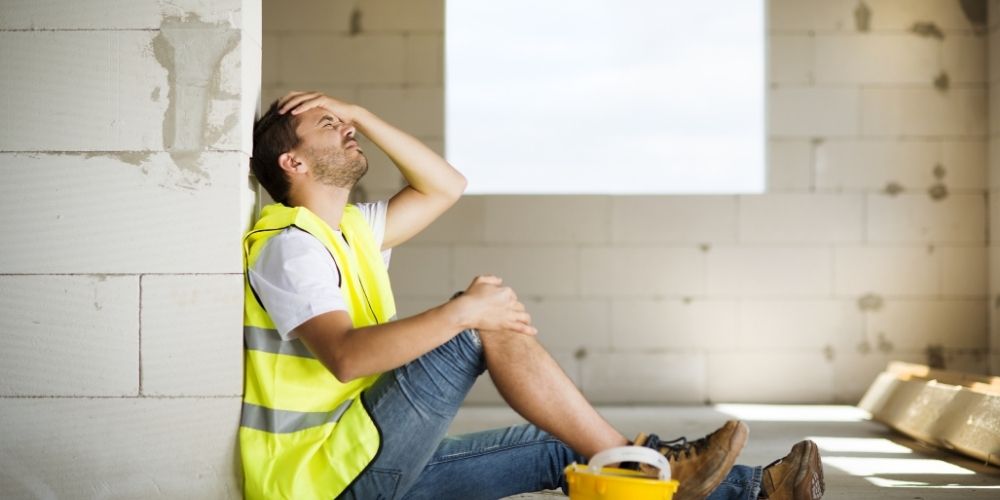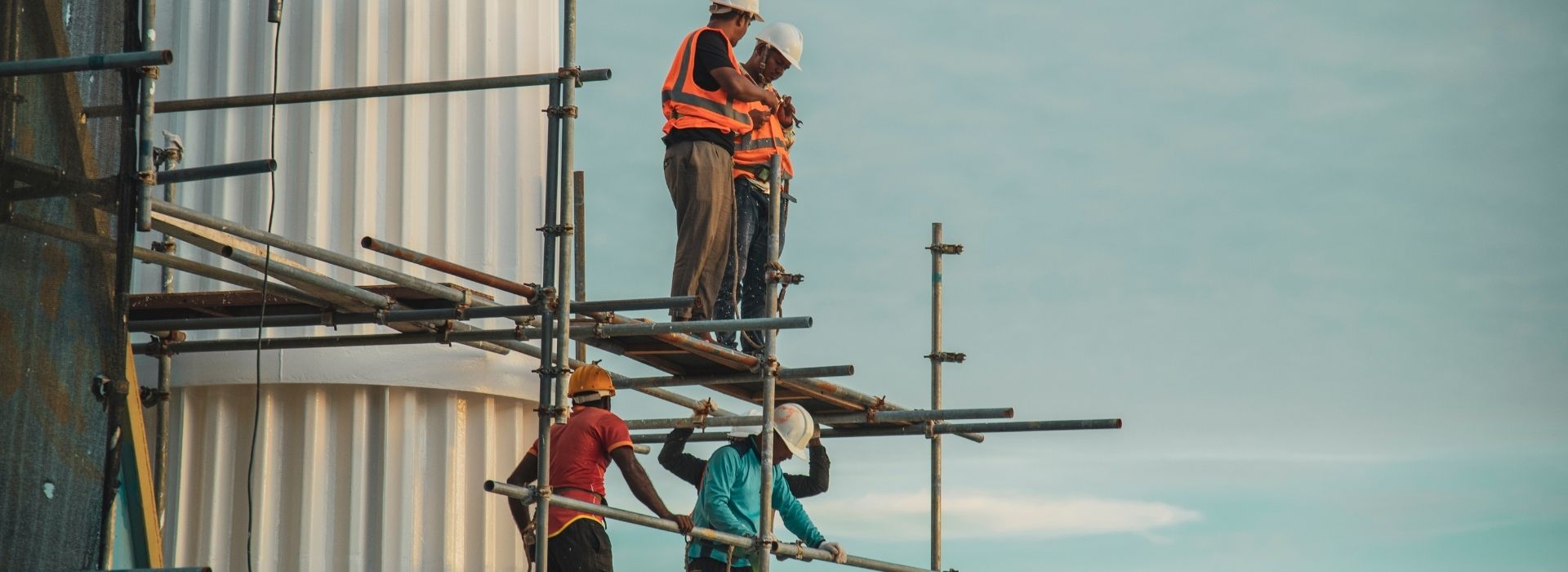Embarking into the demanding terrain of construction, one immediately grapples with the acknowledgment that this profession stands as one of the most physically taxing endeavors. The extensive engagement in this industry invariably exposes individuals to a spectrum of both immediate and enduring health risks, emphasizing the critical need for prioritizing health risks in construction and underscoring the paramount importance of work at height safety on every construction site.
Whether navigating the responsibilities of a carpenter, roofer, welder, equipment operator, or any other role within this diverse field, the inevitability of confronting potential threats to well-being underscores the gravity of the profession. This inescapable reality necessitates a conscientious approach to hazard mitigation, where awareness and preparedness become pivotal in safeguarding the health and safety of workers amidst the multifaceted challenges posed by construction activities.
Health Risks in the Construction

The construction industry, a vital force shaping progress worldwide, is fraught with challenges, particularly concerning the pervasive issue of health risks in construction. This sector, prevalent in numerous countries, stands out for its inherent dangers, emanating from a distinct blend of health and safety risks associated with vehicles, equipment, and manual tasks. Remarkably, it ranks prominently in work-related fatalities, highlighting the global ubiquity of risks associated with construction work.
Across nations, statistical evidence underscores the severity of the situation. Occupational hazards in construction manifest universally, with occupational safety organizations reporting alarming figures. While specifics vary, a consistent theme emerges — the construction industry is consistently beset by a range of health risks that transcend geographical boundaries. These risks contribute significantly to work-related fatalities, imposing a considerable toll on the well-being of workers worldwide.
Irrespective of location, working from height, falls, trips and slips, moving equipment, noise, vibration, manual handling, collapses, asbestos, electricity, and airborne dust collectively present formidable hazards. The consequences of these risks extend globally, potentially resulting in both short-term and long-term financial repercussions, alongside the looming specter of work-related illnesses or injuries.
In response to these challenges, regulatory bodies worldwide have implemented frameworks to address health risks in construction. Internationally recognized organizations, akin to the Occupational Safety and Health Administration (OSHA) and counterparts in various countries, have delineated critical hazards.
1. Falls
Within the dynamic landscape of the construction industry, the persistent threat of falls remains a significant peril. Amidst the myriad of health risks in construction, the implementation of preventive measures takes center stage. Robust safety protocols, encompassing the strategic use of covers, installation of guardrails, and incorporation of advanced fall arrest systems, become paramount to safeguard the well-being of workers navigating elevated work environments. A conscientious approach, marked by vigilant planning and unwavering adherence to safety guidelines, actively addresses and mitigates the potential for falls on the job. This dedicated commitment seamlessly aligns with the overarching goal of prioritizing the health and safety of those within the construction realm.
2. Manual material handling
The health risks in construction are notably intertwined with manual material handling, posing the threat of musculoskeletal disorders (MSD). Strategic precautions, such as dropping materials closer to deployment areas, employing carts, lifting tables for heavy loads, and integrating innovative tools, play a pivotal role in minimizing the risk of MSDs. By analyzing work processes for efficiency and ergonomics, construction endeavors can proactively tackle the challenges associated with manual material handling, safeguarding the health of the workforce.
3. Struck-by accidents
Amidst the myriad of safety concerns within the construction sector, the specter of struck-by accidents emerges as a significant focal point, contributing substantially to the industry’s mortality rate. Notably, incidents involving heavy equipment, such as trucks or cranes, played a pivotal role in these unfortunate occurrences. Employing proactive prevention strategies becomes imperative, ranging from ensuring secure loads and cautioning against suspended loads to the strict enforcement of personal protective equipment (PPE). This multifaceted approach stands as a formidable defense, actively working to mitigate the inherent risks associated with construction-related accidents.
4. Air contaminants
The pervasive issue of health risks in construction manifests prominently in the exposure to airborne contaminants, emphasizing the significance of inhalation safety. Silica, a common contaminant, can lead to respiratory diseases, underscoring the importance of personal protective equipment (PPE) implementation. Strategies such as mask and respirator usage, constant monitoring of contaminant levels, and ensuring adequate ventilation serve as fundamental measures in addressing health risks in construction associated with airborne contaminants.
5. Electrocution
Within the realm of health risks in construction, the threat of electrocution looms large, stemming from powered-up equipment and electrical lines. Incidences of electrocution fatalities are alarmingly high, with electrical contractors reportedly accounting for a substantial percentage of these cases. Preventive measures encapsulated by the use of personal protective equipment (PPE) such as boots, gloves, long-sleeved garments, and face shields, coupled with maintaining safe distances from power lines, form a cohesive strategy to mitigate the specific health risks in construction posed by electrocution.
6. Noise
In the symphony of construction, the silent threat of high noise levels echoes through the pervasive environment, casting a shadow on the auditory well-being of workers. The specter of permanent hearing loss looms, necessitating vigilance and adherence to exposure limits. Employers shoulder the responsibility of not only heightening awareness but also furnishing adequate ear protection when the decibels breach permissible thresholds. A harmonious approach involving regular monitoring and the implementation of a hearing conservation program plays a key role in orchestrating the protection of auditory health, addressing the nuanced challenges posed by excessive noise within the realm of construction.
7. Getting caught in or between
Within the intricate dance of machinery and equipment on construction sites, the ominous risk of being “caught in or between” unfolds. To counter this danger, employee training assumes a pivotal role, instilling heightened awareness of heavy equipment and emphasizing the avoidance of loose clothing. Safeguarding against entanglement with moving machinery parts demands not just knowledge but also the constant vigilance of a well-trained workforce. The synergy of proper training stands as a bulwark, significantly diminishing the probability of accidents entailing entanglement—a testament to the industry’s commitment to safety.
8. High temperatures
In the crucible of construction work, the relentless heat introduces an array of “health risks in construction,” with heat stroke emerging as a formidable adversary. OSHA’s counsel transcends mere guidelines, forming a comprehensive strategy for safeguarding the well-being of workers. From the simple act of hydrating with cool water at regular intervals to strategic rest breaks and seeking refuge in shaded areas, the preventive measures underscore a holistic approach to battling the heat.
The significance of dressing appropriately in the face of scorching temperatures becomes paramount, reinforcing the importance of monitoring each other’s well-being—a collective responsibility that resonates with the essence of mitigating health risks in construction. Adhering to the pragmatic “20% Rule” for new employees becomes an investment in acclimatization, progressively minimizing the risk of heat-related illnesses and fortifying the workforce against the formidable challenges posed by elevated temperatures on construction sites.



